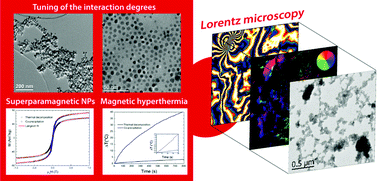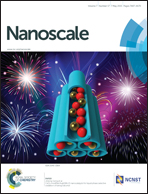Lorentz microscopy sheds light on the role of dipolar interactions in magnetic hyperthermia†
Abstract
Monodispersed Fe3O4 nanoparticles with comparable size distributions have been synthesized by two different synthesis routes, co-precipitation and thermal decomposition. Thanks to the different steric stabilizations, the described samples can be considered as a model system to investigate the effects of magnetic dipolar interactions on the aggregation states of the nanoparticles. Moreover, the presence of magnetic dipolar interactions can strongly affect the nanoparticle efficiency as a hyperthermic mediator. In this paper, we present a novel way to visualize and map the magnetic dipolar interactions in different kinds of nanoparticle aggregates by the use of Lorentz microscopy, an easy and reliable in-line electron holographic technique. By exploiting Lorentz microscopy, which is complementary to the magnetic measurements, it is possible to correlate the interaction degrees of magnetic nanoparticles with their magnetic behaviors. In particular, we demonstrate that Lorentz microscopy is successful in visualizing the magnetic configurations stabilized by dipolar interactions, thus paving the way to the comprehension of the power loss mechanisms for different nanoparticle aggregates.


 Please wait while we load your content...
Please wait while we load your content...